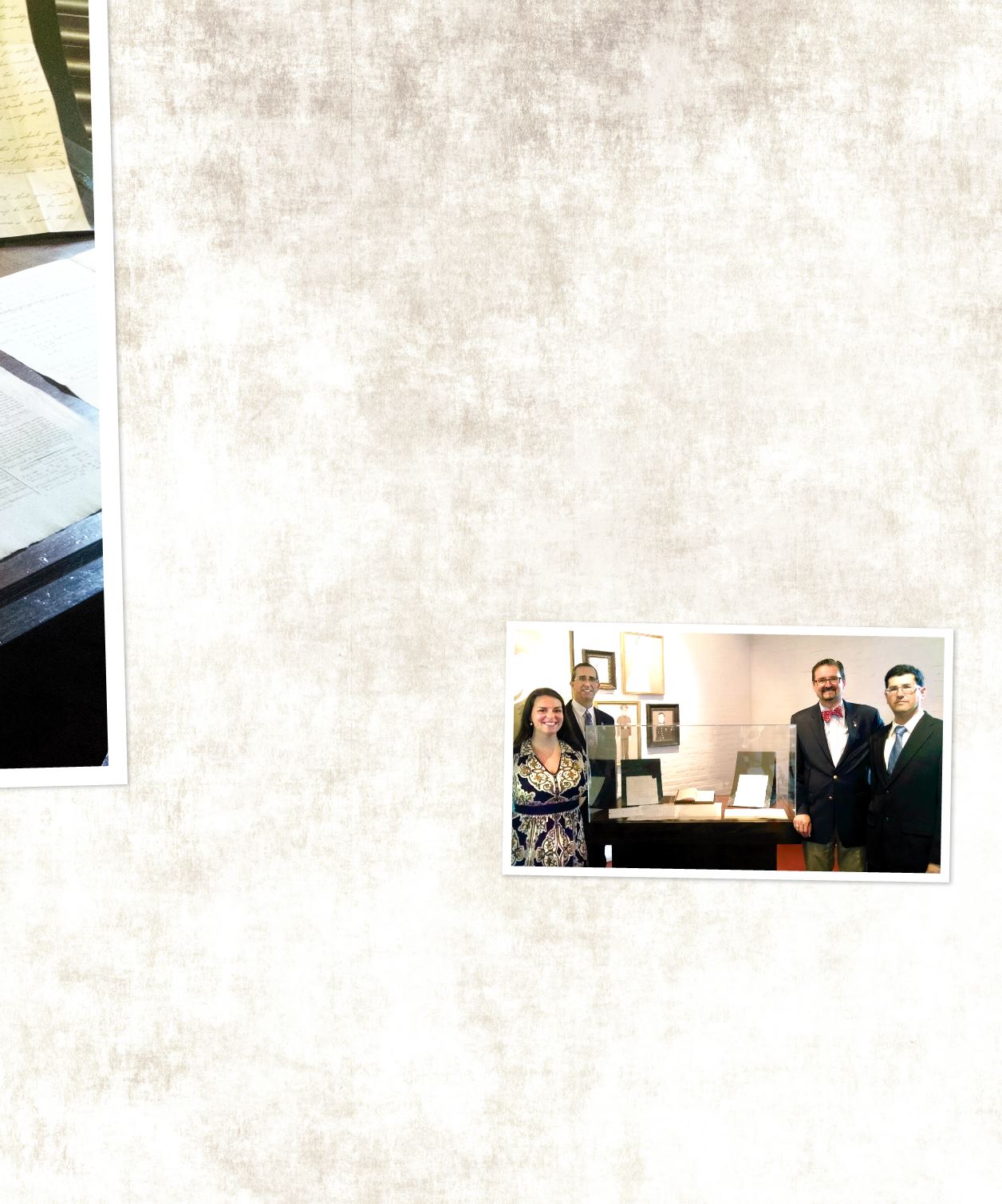
H
istory may have already been written, but new
research and discoveries at Liberty Hall Museum
confirm that it has not, in fact, all been read.
United by their passion for quality scholarship, and a shared
commitment to historical accuracy, Liberty Hall Museum,
along with the Alexander Hamilton Awareness (AHA)
Society, and historical researcher, Michael E. Newton came
together this summer to shed exciting new light on the life
and legacy of one of the Founding Era’s most famous figures:
Alexander Hamilton.
They knew the project’s success was dependent upon finding a
meaningful connection between Hamilton and Liberty Hall,
and were optimistic in their ability to do so; “We knew a link
existed; it had to,” recalls Bill Schroh, Director of Operations
for Liberty Hall Museum, “at that point, it was just a matter
of finding it.” However, as Museum staff members combed
the Liberty Hall archives for all things Hamilton-related,
it soon became clear that they were wrong to assume they
would find that “one meaningful connection.” Because,
before long, they had three.
Discovery #1: The Original Last Will & Testament
of Mr. Peter Lavien
Peter Lavien was the half-brother of Alexander Hamilton,
andpreviously recordedhistory presented their relationship
as volatile at best, if not completely non-existent. However,
when Lavien became business partners with John Kean, he
also set into motion the series of events that would prove
this supposition false, 250 years later. Kean, a leading
Federalist and Cashier of the Bank of the United States,
worked with Alexander Hamilton when he was Secretary
of Treasury, and closely with Lavien for many years.
Upon Lavien’s death, Kean acted out his duties as executor and
added Lavien’s Will to his personal archives, which was found by
the team more than two centuries later. The original document
was discovered in excellent condition, legible and clear in its
orders. One such order was to leave a sizeable amount of Lavien’s
estate to Alexander Hamilton, disproving the previously accepted
idea that the relationship between the two brothers was a negative
one. There were, in fact, no harsh feelings; it was merely distance
and time had divided the two men.
Discovery #2: John Kean’s Letters
When John Kean’s and his family were living in Philadelphia, a
Yellow Fever epidemic broke in the area. In an effort to keep his
family safe, Kean sent his wife and son to live in New Jersey until
the epidemic had passed.
During this separation, Kean wrote to his wife regularly, keeping
“Truth is powerful and
will prevail.”
KEANmag
21
Alexander Hamilton, 1774
her apprised of his health and the health of their friends including,
as was recently discovered, Alexander Hamilton and his wife. In
his letters, Kean chronicled the Hamilton family’s bout with the
illness in great detail; from the time they fell ill, to updates on their
progress, to the happy news of their recovery.
Discovery #3: Martha Washington’s Cat
There is a centuries-old rumor that Martha Washington had
named her feral tomcat “Hamilton,” in reference to the Secretary
of the Treasury and his penchant for women. This reputation did
Hamilton no favors during his day and age, and has served as
the source of much debate today – even receiving a mention in
the current hit Broadway musical “Hamilton,” when Aaron Burr
sings about Hamilton’s delight for women, and recounts the tale
set to music.
However, through an in-depth historiographical approach,
Newton used a variety of fact-based methods, including timelines,
comparative analysis, deductive reasoning, and even a few
dictionaries to debunk the tomcat rumor. As it turns out, Martha
Washington did not even have a tomcat.
The presentation of the “New Hamilton Discoveries” was held on
a sunny July afternoon to two sold-out audiences on the grounds
of Liberty Hall. Since their presentation and public viewing, the
documents have been restored to their home in the Archive Center,
and are available by request for interested historians and authors.
When asked about the underlying significance of discoveries and
events like these, Schroh emphasizes the ripple-like effect they
can have; clarifying the way we understand our past, and in turn
the way we think about and appreciate the present. “It’s important
to add to the public understanding of the lesser-known pieces of
history…because it starts the conversation…it gets them excited.”


